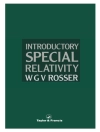Flexible polyurenthane foams of all types are a unique group of plastics materials, characterized by the fact that a multitude of different sets of properties can be obtained by varying the levels of a relatively small number of base components in the formulations. Different foam grades, primarily characterized by density and hardness, can be obtained by changing the ratio between base polyol, polymer polyol, water, blowing agent, isocyanate and other components. It is not uncommon for foam producers in industrialized countries to manufacture more than one hundred different foam grades based on these basic chemicals, plus the ancillary chemicals needed for optimized processing. This has always made flexible polyurethane foams a highly suitable candidate for correlating these variations in the formulations with the resulting properties in a mathematical way, aimed at predicting the properties as accurately as possible, fine-tuning existing grades or designing new foam grades. This book discusses the methodology for obtaining meaningful equations for correlating properties with formulation variables and other influencing factors
Kurt C. (University of Detroit, Michigan, USA) Frisch & Daniel (University of Detroit, Michigan, USA) Klempner
Advances in Urethane [EPUB ebook]
Science & Technology, Volume XIV
Advances in Urethane [EPUB ebook]
Science & Technology, Volume XIV
Buy this ebook and get 1 more FREE!
Format EPUB ● Pages 328 ● ISBN 9781000725490 ● Publisher CRC Press ● Published 2020 ● Downloadable 3 times ● Currency EUR ● ID 7369757 ● Copy protection Adobe DRM
Requires a DRM capable ebook reader












